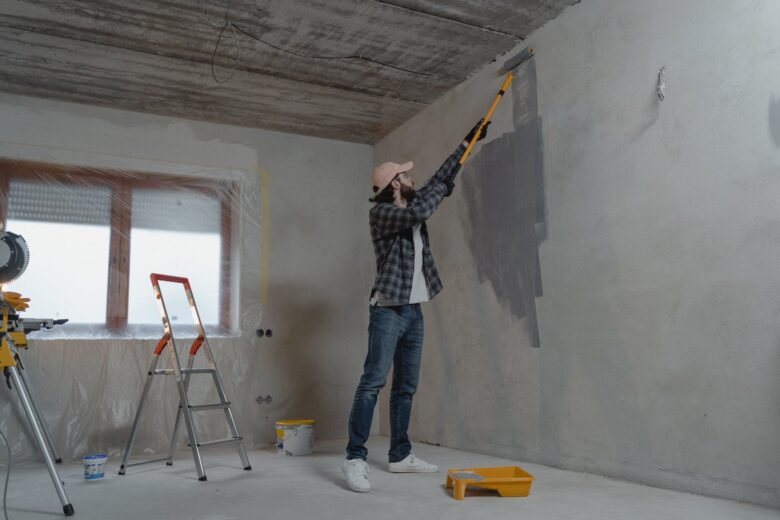Starting a home improvement project can be exciting because it is an opportunity to make your living space more comfortable, functional, or beautiful. But if you don’t plan and think, these projects can easily go wrong, leading to stress, extra costs, and less-than-stellar results. If you want your next home improvement job to go smoothly, don’t do these six things:
1. No clear plan and vision
Planning is one of the most important parts of any renovation job, but it is often overlooked. If you start a project without a clear vision and plan, you may make arbitrary choices, end up with mismatched design elements, and end up with a place that doesn’t meet your needs or expectations. Spend enough time planning to avoid this situation. This includes researching design ideas, figuring out what the project is about, and choosing a style or theme that will be used throughout the project. A well-thought-out plan will help you make your choices and ensure that the result makes sense.
2. Inadequate budget planning
Underestimating your budget is a common mistake people make when renovating their homes. Your unexpected costs can quickly add up, leaving you short of money, or worse, your work not being done yet. To avoid this, create a specific budget before you start. Save at least 15 to 20 percent of your budget as “just in case” money to cover unplanned expenses. By getting quotes from different contractors and planning the cost of the project, you can get a more accurate idea of how much the entire project will cost.
3. Not aware of the importance of licensing
Depending on the size and type of your home improvement project, the building department may require you to apply for a permit. If you skip this step, you could face fines, legal issues, and problems selling your home in the future. Before you begin your work, it is important to understand what licenses your work requires and obtain them. This ensures that the work has been vetted and meets safety standards, as well as local building codes and regulations.
4. Do it yourself if you don’t know how
You can save money by taking on some home improvement projects yourself, but if you think you are smarter and more skilled than you are, you may make costly mistakes and execute them poorly. You need to be honest with yourself about what work you can do and what work you should leave to the professionals. Hiring an experienced professional to handle plumbing or electrical work that is difficult to do yourself is safer and will save you time and money in the long run.
5. No consideration for long-term maintenance
When you get excited about choosing materials and finishes, it’s easy to forget about their maintenance and long-term durability. If you choose a material that requires a lot of maintenance or doesn’t suit your lifestyle, you may have to do more work and spend more money on maintenance in the future. When choosing materials, consider how long they last, how much maintenance they require, and how well they fit into your daily life and use. Choosing durable, low-maintenance materials can make your home improvement project more enjoyable and sustainable.
6. Ignoring the overall style of the house
While it can be tempting to follow the latest design trends, using a style that doesn’t fit with the rest of your home’s architecture can make it look disjointed. It is important to ensure that new changes do not conflict with the old structure. You can still add modern touches to your home, but it’s important to respect and build on the home’s original style. Finding the right mix between updates and maintenance can have a big impact on how complete and attractive your home is.
Conclusion
All in all, completing a home improvement project requires careful planning, understanding your budget, following rules, and an honest assessment of your DIY skills. In addition, it is important to choose materials with foresight and ensure that they match the style of your home’s current architecture. By avoiding these six common mistakes, homeowners can effectively and efficiently improve their living spaces so that their homes look and function better. Ultimately, a successful home improvement job not only increases the value of your home but also makes your life better, making the work and money worth it.
FAQs
1. How do I make sure my project plan covers everything?
First, write down the objectives and key responsibilities of the project. Do a lot of research and think about how things look and work. Speak to an expert for advice on procedures and issues that may arise. A detailed plan with sketches or mood boards and a step-by-step to-do list can help you assess the project and find parts you forgot to include.
2. What should I budget for a home repair project?
Your budget should include the cost of all supplies, labor, licensing, and an emergency fund in case of problems. Include contractor bids, delivery costs, and any costs associated with obtaining the appropriate permits. With a detailed budget, you avoid being surprised by the costs and you ensure that you complete the work according to plan.
3. How do I know if my project requires a license?
Different locations and types of projects have different permit requirements. Normally permission is required to make some changes to the structure, electricity, water, and exterior. Talk to a construction department or professional contractor in your area to find out the exact requirements for your job.
4. When should I consider calling a professional instead of doing it myself?
Think about your experience, skills, and the difficulty of the job. It is better and more efficient to hire professionals for jobs that require specialized knowledge, such as plumbing, electrical work, or building renovations. Also, consider hiring professionals for jobs where mistakes could cost more or put people at risk.
5. How do you choose something that is durable and requires little maintenance?
Investigate materials that are known to be durable and easy to maintain. Factors such as wear and tear, ease of cleaning, and weather resistance must be taken into account. You can also get useful information by talking to a professional or going to a home repair shop to look at the materials in person.
6. Can I add a touch of design to my home without changing the overall style?
Yes, you can combine fashion trends with the style of your home, as long as you choose elements that complement the style and don’t conflict with it. Instead of fixed features, follow trends with easily updated things like paint, trim, and fixtures so you can make changes in the future.



